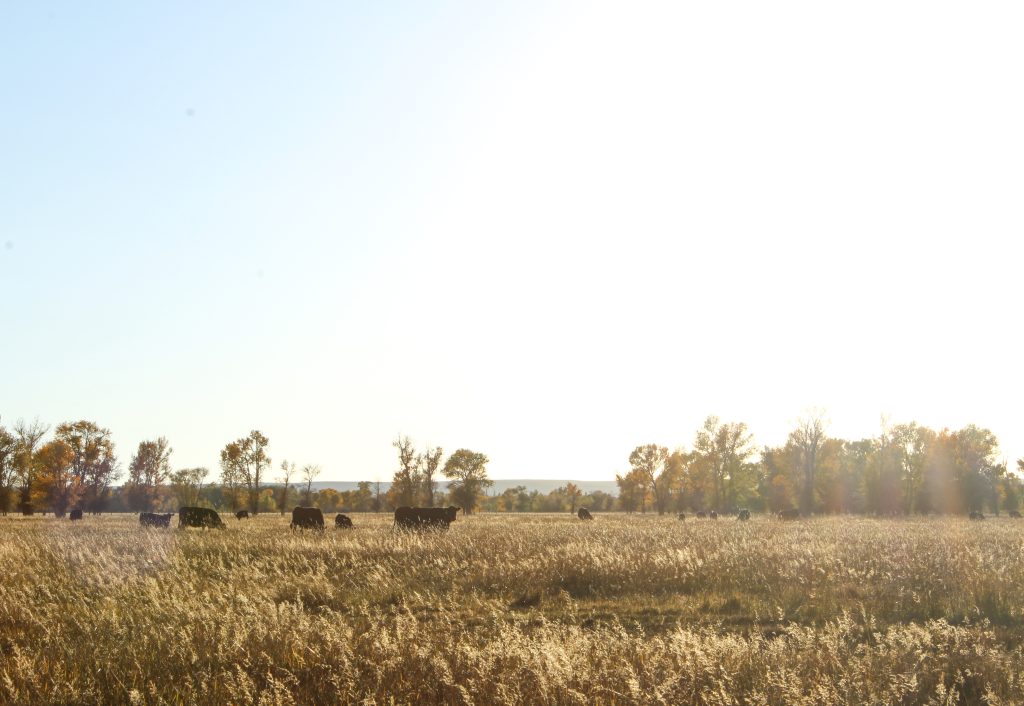Pre-weaning: Calf health and nutrition are critical for successful weaning Pre-weaning

For many cattle producers, October brings one of the greatest tasks of the season – weaning.
Weaning is considered one of the most stressful periods in the life of a beef animal, and if not done carefully, stress caused from weaning can eventually impact an operation’s bottom line.
As producers gear up for this big event, there are a few things they should keep in mind prior to weaning.
Impact of stress
In addition to being removed from their dam, calves are exposed to numerous other stressors during weaning.
These include physiological changes, castration, vaccination, dehorning, new environments, changes in feed and water sources and seasonal changes in climate.
According to the Oregon State University (OSU) Extension Service, these stressors can impact calves’ short- and long-term health, gain performance and economic viability, which can ultimately impact the producer.
“Calves that are sick during the first 30 days at the feedlot typically have lower daily gains, increased costs of gain and reduced carcass quality and tenderness,” explains OSU.
The Extension service further explains producers who retain ownership of their calves at the feedlot until slaughter are directly affected by health and gain variables, while producers who market their calves at weaning may not see as great of an impact.
However, these producers may lose their reputation as a source of feeder calves in the future, OSU notes.
“From an industry perspective, how we manage our calf crop, pre-weaning, at weaning and post-weaning can have dramatic effects on economic viability, consumer acceptance and end-product quality,” states OSU.
Pre-weaning nutrition
In order to ensure a successful weaning, calf nutrition should be a priority from the time the animal hits the ground. In fact, it is imperative calves consume colostrum 24 hours after birth to receive passive immunity from their dam, which will have lifelong effects on their health.
From the time they are born up until the day they are weaned, calves’ diets will largely consist of their dam’s milk and the pasture they graze, which means pre-weaning diets are highly variable.
“This variability does make it challenging to provide recommendations,” notes a March 7 Penn State Extension article originally published in Progressive Cattlemen. “The appropriate concentration of energy and protein for a pre-weaned, continental-breed calf in Montana will not be the same as the concentration for a pre-weaned, Brahman-influenced calf in Florida, for example.”
Regardless of their environment, as calves move closer to weaning day, a robust and balanced diet of protein, energy, minerals and vitamins is critical.
“Nutrition is a key element in the weight gain and immune response of weaned calves,” writes Nebraska Extension Beef and Range Management Specialist Karla Jenkins, Nebraska Extension Feedlot Veterinarian Dr. Dee Griffin and Former Nebraska Extension Beef Nutrition Specialist Aaron Stalker in a University of Nebraska-Lincoln (UNL) article published in August 2015.
“Milk is rich in energy, protein, vitamins and minerals, and it needs to be replaced with high-quality forage and possibly supplemented to maintain pre-weaning nutrient intake,” the trio continues. “Fortifying the pre- and post-weaning diet with vitamins and minerals can contribute to improve immune function and reduce post-weaning sickness.”
If calves are allowed to continue grazing before and during weaning, UNL encourages producers to evaluate the nutrient content of the forage. Since the nutrient content of native range decreases in the fall, they may want to consider providing calves with supplemental creep feed.
When weaning in a drylot, calves must learn to eat from a bunk.
UNL recommends providing 1.5 to two feet of bunk space per head and adding dirt around bunks to make sure smaller calves can reach the feed.
“Reduced intake typically results in poor weight gain and depressed immune function. Therefore, maintaining feed intake is crucial,” explains the UNL educators. “Feeding long-stem, high-quality grass hay during the first two or three days post-weaning, works well to start calves on feed.”
After two or three days, the specialists recommend adding high-energy feeds to the diet as a total mixed ration or top-dressed on hay.
“Fermented feeds such as silage should be avoided until calves are eating well, as it is not highly palatable to them. Additionally, energy is important but energy sources high in starch, such as corn, should be limited to 50 percent or less of the dietary dry matter,” says Jenkins, Griffin and Stalker.
In both pasture and drylot settings, it is also important calves become accustomed to their new water sources.
“Unlimited access to fresh, clean water is essential for weaned calves. If the post-weaning water source is unfamiliar to the calves, make accommodations to familiarize them,” explains the trio. “Allowing the water source to overflow for a brief time may help calves find the water.”
Calf health considerations
Calf health comes second to nutrition when ensuring a successful weaning.
However, because immune responses to vaccinations are not immediate, many experts suggest producers vaccinate their calves two to three weeks prior to weaning.
According to UNL, an effective pre-weaning vaccination protocol includes a bovine respiratory disease (BRD) viral vaccine, including infectious bovine rhinotracheitis, bovine virus diarrhea and bovine respiratory syncytial virus; a BRD bacterial vaccine, such as Presponse, Pulmo-Guard, One-Shot, etc. and a clostridial vaccine, such as a seven-way blackleg vaccine.
Calves should also receive an effective dewormer.
UNL further notes it is important to use low-stress handling techniques to ease calves away from their mothers in order to keep stress at a minimum and boost the response of the vaccinations calves were given prior to weaning.
“All calves should also be castrated, dehorned and branded before weaning to alleviate the stress associated with the weaning process as much as possible,” OSU concludes.
Keep an eye out for additional articles on weaning strategies and post-weaning management in future editions of the Wyoming Livestock Roundup.
Hannah Bugas is the managing editor of the Wyoming Livestock Roundup. Send comments on this article to roundup@wylr.net.





